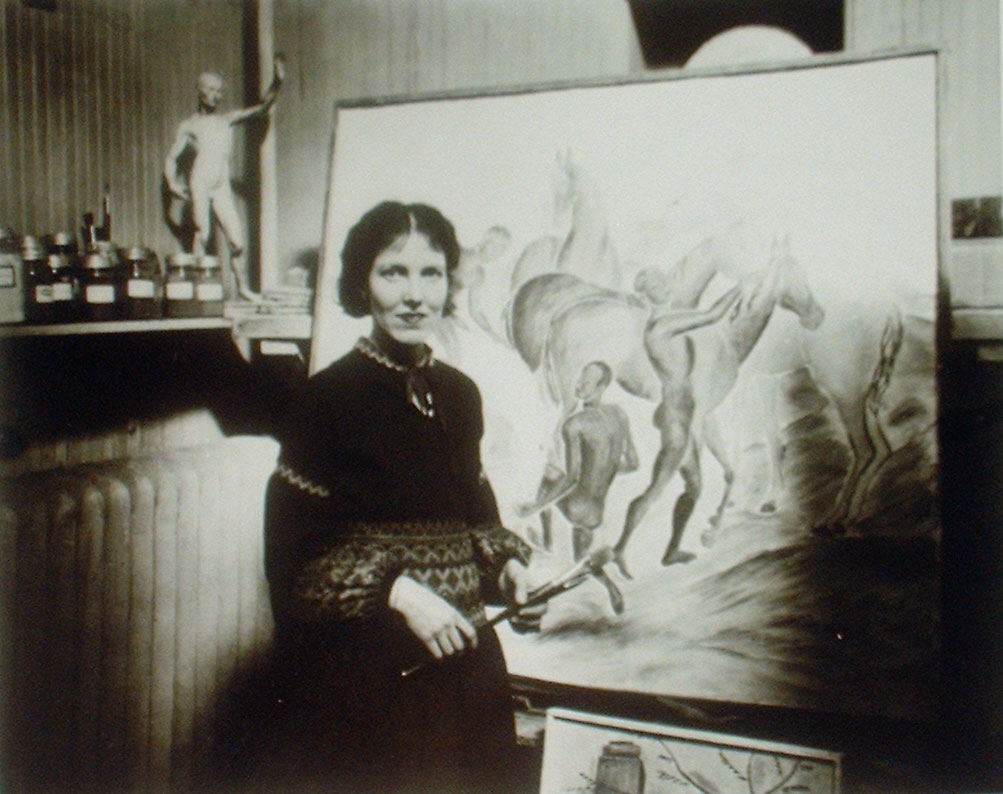
Louise Emerson Ronnebeck was born in the Germantown area of Philadelphia in 1901, the youngest of three daughters of Mary Crawford Suplee and Harrington Emerson. Contrary to frequent references, Louise was not the great grand niece of Ralph Waldo Emerson.
Louise graduated from Barnard College in 1922. From 1922 through 1925, she studied painting at the Art Students League in New York under Kenneth Hayes Miller (1876-1952). Miller, known for his American Scene paintings, was an influential teacher to many of the period’s best artists of the genre, such as Edward Hopper, Yasuo Kuniyoshi, Isabel Bishop and George Bellows.
During the summers of 1923 and 1924, Louise studied fresco painting at the American Academy at Fountainebleu, outside of Paris. Her instructor was Paul-Albert Baudouin (1844-1931), a former student of Pierre Puvis de Chavannes. Along with her fresco work, she worked in oil, tempera and watercolor.
In the summer of 1925, Louise and her sister, Isabel, drove from New York to Taos, New Mexico, to be the guests of Mabel Dodge Luhan at her ranch, Los Gallos. Louise said of New Mexico, “It was a marvelous place, all wild, strange, empty and romantic.” During this extended visit she met another of Mabel’s guests, German born artist, Arnold Rönnebeck, who, coincidentally, was also visiting from New York. Together they painted and sketched the Taos landscape, rode horses and a romance flourished. In October 1925, Arnold Rönnebeck wrote to Alfred Stieglitz:
“What a summer! …. The one other person who is doing something about this country is a young girl from New York, Louise Emerson, a pupil of Kenneth Hayes Miller at the league. Still under the influence of Derain, but strong and powerful and with a very personal vision. “She lives in one of Mabel’s cottages and is going very good watercolors and oil landscapes.”
Another important summer 1925 Taos experience for Louise was meeting the writer D.H. Lawrence. She described it as being one of the most memorable days of her life. In a newspaper interview c1968, she said:
“I had read all of Lawrence’s books and adored him. My sister and I got into our broken-down old Buick and went to call on him. It was a little awkward calling as we didn’t know what reception we would get as we hadn’t been asked to call. But it was perfectly alright. He seemed only too happy to have someone who would listen to him. He baked bread for us in a little oven outside, and his wife Frieda made jam. He held forth on then popular writers of the day.”
At the time D.H. and Frieda Lawrence were living on a ranch provided by Mabel located 20 miles outside of Taos.
In March of 1926, Arnold and Louise married at All Angels Episcopal Church on the Upper Westside of Manhattan, followed by a small reception at Louise’s parents’ home nearby. They took what they called an “extended wedding trip” to California, Mexico, and the West. Arnold’s 1925 Weyhe Gallery one-man exhibition was traveling to San Diego in April, followed by Los Angeles in June, and the newlyweds took the opportunity to attend the exhibitions and explore the West.
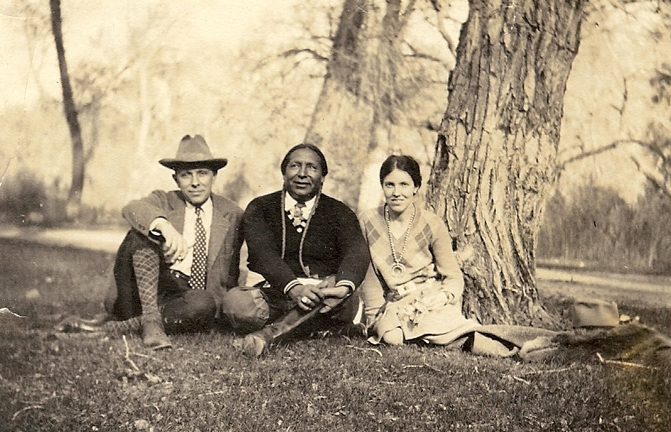
While the couple was in Denver, Arnold was offered the position of Director of the Denver Art Museum and the couple decided to stay. The position provided him with a consistent salary, but he was also able to continue his work as a sculptor. This, too, afforded Louise the opportunity to continue her work, even after the birth of their children. In a 1930 interview in the Rocky Mountain News, she said, “Between meal time, the mother rests while the artist works”.
After settling in Denver in 1926, Arnold and Louise were active in the Denver art community. Both were founding members of the Denver Artists Guild in 1928. Throughout the 1920s and 1930s, they traveled regularly to Santa Fe and Taos, and when in Taos stayed at Mabel’s compound. On one visit sometime in the 1930s, Mabel and Tony gave Arnold and Louise’s children a baby angora goat. She traveled back to Denver with the family in their car and she was so well-behaved, they named her Angelica. She remained a treasured member of the family for many years, going on mountain hikes with the family and appearing frequently in some of Louise’s works.
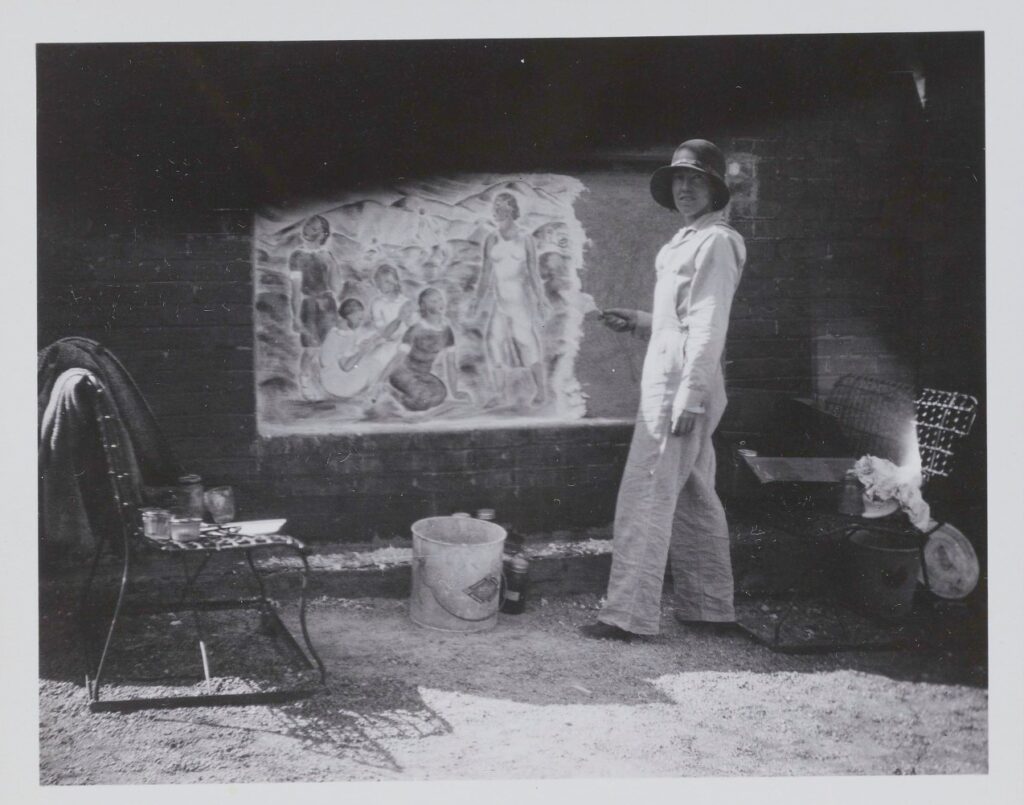
Louise worked tirelessly taking on a variety of subjects depicting everyday life, ranging from mothers and children, men building a house to landscapes and silver mines. She also executed portrait commissions of many of Denver’s prominent citizens. She derived as much joy and satisfaction painting a crowded Western battle scene or automobile accident as she did painting a bucolic picnic scene or her daughter’s fourth grade class singing “My Country ‘Tis of Thee”.
She received commissions for many frescoes and murals in the Denver area. Unfortunately, many of them have been lost, due to the buildings’ demolition. Some of her commissions were for the Kent School for Girls (1933) Morey Junior High (1934), the City and County Building (1935), Church of the Holy Redeemer (1938), Robert Speer Memorial Hospital for Children (1940), USO Men’s Service Center (1942), Albany Hotel (1948) Weld County Hospital in Greeley, Colorado in 1952.
Building a painting career is a challenge at the best of times, but during the Depression and World War II years, even more so. However, an equally difficult obstacle she faced was the perception that women artists were not serious about their work. On occasion, she was described in belittling terms, such as “gifted socialite”, or “clever with brushes”. She proved them wrong by creating a strong and diverse body of work. During this period, many women, artists or otherwise, set aside their careers in order to marry and raise a family, beginning a career only once their children are grown and/or the death of their husband. For Louise, however, it was the opposite. The years during which she was married and raising children were her most productive.
Louise was especially active in pursuing commissions through the Treasury Department’s Section of Painting and Sculpture, later the Section of Fine Arts. Between 1937 and 1944, she entered 16 competitions for mural commissions in Department of Justice Building, Washington, DC (1936, 1941), Fort Scott, Kansas (1937), Phoenix, Arizona (1937), Dallas Texas (1940), Amarillo, Texas (1941), Worland, Wyoming (1938), Grand Junction and Littleton, Colorado (1940), Social Security Building, Washington, D.C, (1940 and 1942), and Los Angeles, California (1944). She won two commissions for post office murals, both funded by the Treasury Department Section of Painting and Sculpture. For more details about her two commissions, please go to the New Deal Commissions page.
Louise’s first Section commissioned mural, entitled The Fertile Land Remembers, was for the Worland, Wyoming Post Office in 1938. It was later moved to the Dick Cheney Federal Building in Casper, Wyoming.
Louise’s second commission was for the post office and courthouse for the Colorado town of Grand Junction. The Harvest was completed and installed in 1940. It, too, was moved, to the Wayne Aspinall Federal Building.
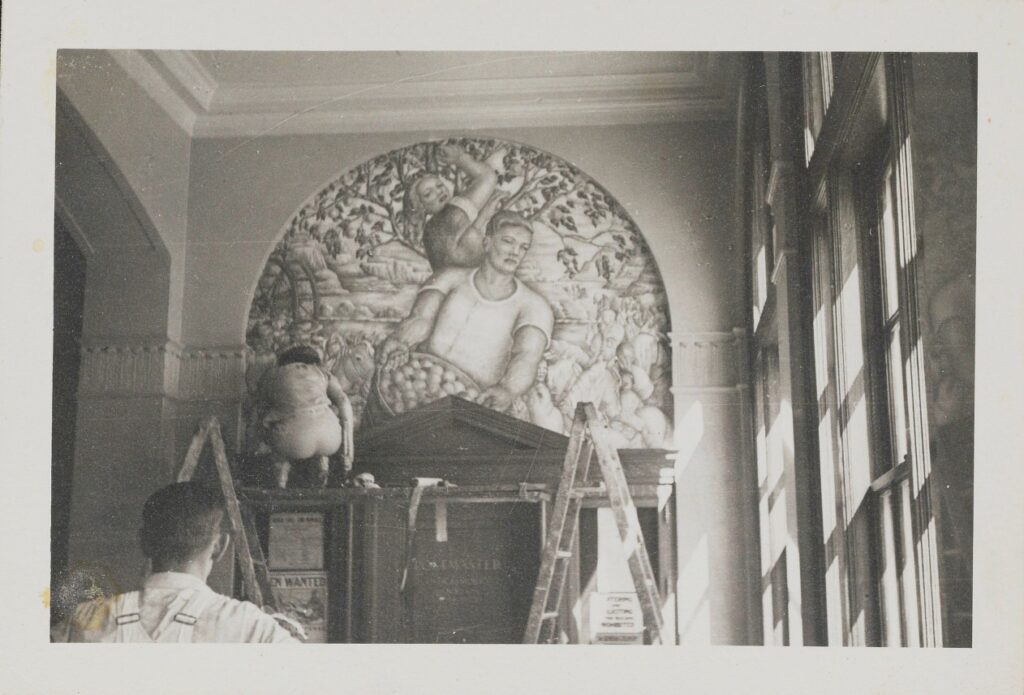
After her husband, Arnold, died in 1947, she “lost heart” and didn’t produce a great deal of work. Instead she focused her energy teaching as an Assistant Professor of Drawing and Painting in the College of Fine Arts at the University of Denver School or Art until 1950.
In the mid 1950s, once both of her children were married and starting their own lives, she moved to Bermuda, where the Emerson family had vacationed for many years. She again focused on teaching at the Bermuda School for Girls from 1954-1973.
Louise Emerson Ronnebeck was an ambitious muralist who challenged herself and the Denver art community by adopting the labor-intensive mediums of fresco and large-scale canvas. She persevered and prevailed in the art world during the Depression, as proven by her being awarded two highly sought after WPA commissions and producing a significant body of work. She accomplished this while committed to her husband, his career and raising their two children. She did not permit society’s expectations about marriage and motherhood to limit her artistic output. Louise achieved one of life’s most difficult objectives: balance. Louise Emerson Ronnebeck left behind a legacy of her unique impressions of the American West between the wars.
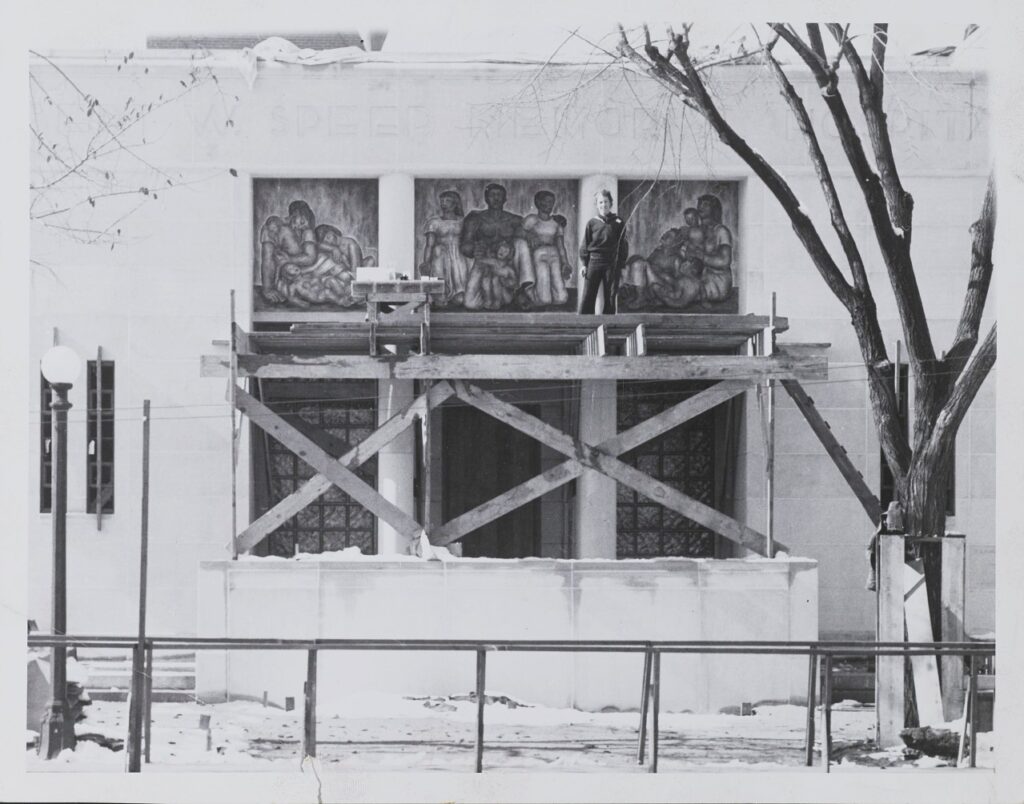
Among others, Louise’s work has been exhibited at the Autry Museum of Western Heritage in Los Angeles, California Palace of the Legion of Honor in San Francisco, Denver Art Museum, Colorado Springs Fine Arts Center, Kirkland Museum of Fine and Decorative Art in Denver, Forum Gallery in New York, and the Panhandle Plains Museum in Canyon Texas.